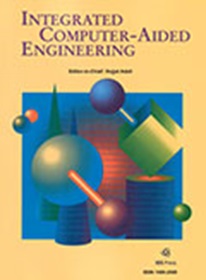Comparative deep learning studies for indirect tunnel monitoring with and without Fourier pre-processing
IF 5.3
2区 计算机科学
Q1 COMPUTER SCIENCE, ARTIFICIAL INTELLIGENCE
引用次数: 2
Abstract
In the last decades, the majority of the existing infrastructure heritage is approaching the end of its nominal design life mainly due to aging, deterioration, and degradation phenomena, threatening the safety levels of these strategic routes of communications. For civil engineers and researchers devoted to assessing and monitoring the structural health (SHM) of existing structures, the demand for innovative indirect non-destructive testing (NDT) methods aided with artificial intelligence (AI) is progressively spreading. In the present study, the authors analyzed the exertion of various deep learning models in order to increase the productivity of classifying ground penetrating radar (GPR) images for SHM purposes, especially focusing on road tunnel linings evaluations. Specifically, the authors presented a comparative study employing two convolutional models, i.e. the ResNet-50 and the EfficientNet-B0, and a recent transformer model, i.e. the Vision Transformer (ViT). Precisely, the authors evaluated the effects of training the models with or without pre-processed data through the bi-dimensional Fourier transform. Despite the theoretical advantages envisaged by adopting this kind of pre-processing technique on GPR images, the best classification performances have been still manifested by the classifiers trained without the Fourier pre-processing.带和不带傅立叶预处理的隧道间接监测的深度学习比较研究
在过去的几十年里,大多数现有的基础设施遗产正接近其标称设计寿命的终点,主要是由于老化、退化和退化现象,威胁到这些战略通信路线的安全水平。对于致力于评估和监测现有结构的结构健康(SHM)的土木工程师和研究人员来说,对人工智能辅助的创新间接无损检测(NDT)方法的需求正在逐步扩大。在本研究中,作者分析了各种深度学习模型的应用,以提高对用于SHM目的的探地雷达(GPR)图像进行分类的效率,特别是侧重于公路隧道衬砌评估。具体而言,作者提出了一项比较研究,采用了两种卷积模型,即ResNet-50和EfficientNet-B0,以及最近的变换器模型,即视觉变换器(ViT)。准确地说,作者通过二维傅立叶变换评估了在有或没有预处理数据的情况下训练模型的效果。尽管在GPR图像上采用这种预处理技术具有理论优势,但在没有进行傅立叶预处理的情况下训练的分类器仍然表现出了最佳的分类性能。
本文章由计算机程序翻译,如有差异,请以英文原文为准。
求助全文
约1分钟内获得全文
求助全文
来源期刊

Integrated Computer-Aided Engineering
工程技术-工程:综合
CiteScore
9.90
自引率
21.50%
发文量
21
审稿时长
>12 weeks
期刊介绍:
Integrated Computer-Aided Engineering (ICAE) was founded in 1993. "Based on the premise that interdisciplinary thinking and synergistic collaboration of disciplines can solve complex problems, open new frontiers, and lead to true innovations and breakthroughs, the cornerstone of industrial competitiveness and advancement of the society" as noted in the inaugural issue of the journal.
The focus of ICAE is the integration of leading edge and emerging computer and information technologies for innovative solution of engineering problems. The journal fosters interdisciplinary research and presents a unique forum for innovative computer-aided engineering. It also publishes novel industrial applications of CAE, thus helping to bring new computational paradigms from research labs and classrooms to reality. Areas covered by the journal include (but are not limited to) artificial intelligence, advanced signal processing, biologically inspired computing, cognitive modeling, concurrent engineering, database management, distributed computing, evolutionary computing, fuzzy logic, genetic algorithms, geometric modeling, intelligent and adaptive systems, internet-based technologies, knowledge discovery and engineering, machine learning, mechatronics, mobile computing, multimedia technologies, networking, neural network computing, object-oriented systems, optimization and search, parallel processing, robotics virtual reality, and visualization techniques.
 求助内容:
求助内容: 应助结果提醒方式:
应助结果提醒方式:


